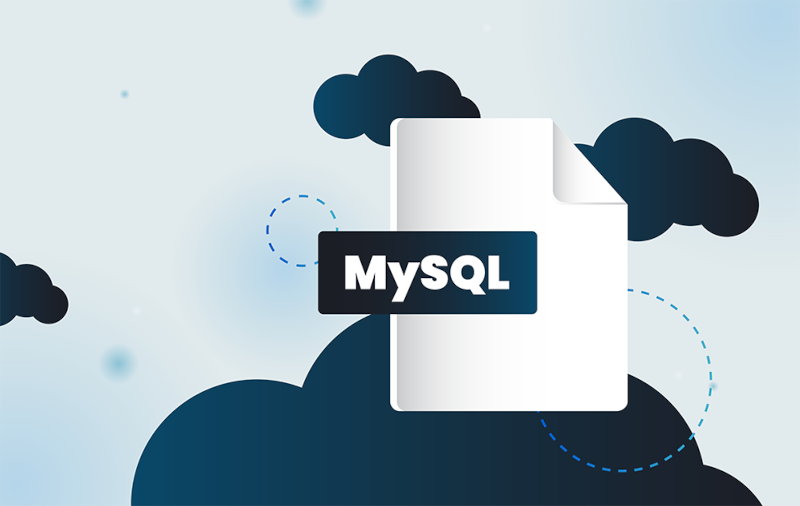What developer wants to spend their time patching the same vulnerabilities after every release? Not exactly living the dream.
Secure by Design makes it easier to deal with those kinds of issues earlier on, so instead of reacting to problems, you’re stopping them before they ever make it into production.
If you’re wondering what Secure by Design is all about and how it can be put into practice, SecureFlag is here to help.

Understanding Secure by Design Principles
Secure by Design makes security an integral part of how software is planned and developed, not something that’s looked at only after the product is completed.
It involves looking at potential risks during the earliest stages of design and making architectural and secure coding decisions that help prevent vulnerabilities from emerging in the first place.
Rather than reacting to issues after deployment, teams take a proactive approach, thinking through how different components interact and where controls need to be in place.
Security should be a main requirement along with performance and functionality, and integrated throughout the software development life cycle (SDLC).
Why Is Secure by Design Getting So Much Attention?
The idea of Secure by Design has been around for a while now, but it’s gained a lot of traction due to:
-
High-profile breaches: Attacks like the SolarWinds breach and, more recently, the CrowdStrike outage, have shown how weaknesses in software design and supply chains can have industry-wide implications.
-
Increased regulatory and industry pressure: Agencies like the U.S. Cybersecurity and Infrastructure Security Agency (CISA), along with international partners, have issued clear guidance encouraging software vendors to adopt Secure by Design principles.
In 2024, CISA also announced that 68 leading software manufacturers signed its Secure by Design pledge, committing to build stronger security into their products.
- Shift-left movements: DevSecOps has encouraged teams to shift left, that is, to move security earlier in the SDLC, making Secure by Design a good fit.
Secure by Design Principles
Now that we’ve answered “what are Secure by Design principles?”, let’s look at the principles themselves. While the exact list can vary slightly depending on the source, some themes keep showing up.
1. Identify Threats Early with Threat Modeling
Threat modeling helps teams understand what could go wrong before it does. Systematically identifying potential threats and attack vectors during design and development allows organizations to build in security measures from the beginning.
Effective threat modeling:
-
Maps out how data flows through the system.
-
Identifies potential threats and weaknesses.
-
Prioritizes mitigations based on actual risk.
An automated threat modeling solution, like ThreatCanvas, integrates directly into design and development workflows, making it faster and more collaborative.
To add to that, teams can apply threat modeling effectively with SecureFlag, which offers hands-on labs that guide users through realistic threat scenarios, strengthening secure coding skills.
2. Reduce Attack Surface Area
The more features, ports, APIs, and integrations you have, the more chances attackers have to exploit them. Reducing the attack surface limits opportunities for attackers to exploit vulnerabilities using well-known exploitation techniques.
Secure by Design pushes teams to:
-
Keep components small and modular.
-
Disable unused functionality.
-
Avoid exposing internals unnecessarily.
This also ties into Zero Trust, where it’s best to assume that every component could be compromised, and limit what each can access or expose. “Never trust, always verify!”
3. Use Secure Design Patterns
There’s no need to reinvent the wheel every time you work with sensitive data or permissions; rather, try to use:
-
Trusted security libraries and frameworks.
-
Established design patterns such as input validation, proper encoding, and strong access control.
-
Secure coding best practices and robust access management protocols, like IAM, to ensure least privilege and granular permissions.
4. Secure the Entire Development Lifecycle
As mentioned, security should be part of the entire development process and includes all the different stages, such as:
-
Requirements gathering
-
Design and architecture
-
Development phase
-
Coding
-
Testing
-
Deployment
-
Maintenance
Not only should threat modeling and secure coding training be embedded into the SDLC, but security testing and continuous monitoring are also essential to identify vulnerabilities at every stage.
5. Integrate Security into Everyday Workflows
When security tools or processes slow developers down, it’s only natural that they’ll look for shortcuts. Secure by Design makes security easier to implement by integrating it into the tools, APIs, and workflows teams already use.
For example, ThreatCanvas can be integrated into Jira and Azure DevOps boards so that developers can create instant threat models at the click of a button.
6. Multiple Layers of Defense
Another Secure by Design principle is using multiple layers of defense throughout the SDLC, rather than a single security control, to protect software. This is known as Defense in Depth, and it’s something that organizations should include in their security strategies.
Having multiple layers makes it much harder for cyber threats to reach sensitive data or disrupt systems. With these layers of defense, organizations can lower the risk of security breaches and limit the damage if an attacker does manage to get through.
Secure by Design vs. Secure by Default vs. Secure in Deployment
These phrases often show up together, and while they overlap, they’re not the same.
-
Secure by Design: Security is planned and built in from the start.
-
Secure by Default: Products are deployed in a secure state, without needing extra configuration.
-
Secure in Deployment: Security is maintained after launch, with updates, monitoring, and incident response.
All of this works best when proper security controls and policies support it. When teams have well-defined standards to follow, it’s easier to automate checks and adhere to compliance regulations.
More importantly, it helps create a culture where everyone feels responsible for the security of the software they’re producing.
Benefits of Secure by Design
Building software with Secure by Design principles isn’t just good practice, but it makes life easier for all teams involved.
When security is part of the process from the start, teams can find and mitigate issues earlier, reduce rework, and release more reliable products.
-
Fewer vulnerabilities: Thinking about security from the beginning means it’s less likely to introduce risky code, which means fewer issues to mitigate later and security incidents to clean up.
-
Lower development costs: Fixing a security flaw after release is more expensive than catching it during development. Secure by Design helps you shift left and save time (and money).
-
Better resilience: Software that’s built securely is more likely to prevent attacks and recover more quickly if something does go wrong.
-
More customer trust: Users notice when security is taken seriously, and Secure by Design shows them their data is being protected.
-
Easier compliance: Many industry standards and regulations already expect Secure by Design, so following these principles can make audits and certifications less complicated to do.
Challenges of Secure by Design
Of course, moving to a Secure by Design approach isn’t always easy. Here are a few common obstacles:
-
Getting everyone on board: Security can’t just be the security team’s job; it needs to be part of how everyone thinks about developing software. That can take a mindset shift.
-
Changing old habits: Integrating security early might mean reworking how teams plan, design, and build. It’s worth it, but it can take time.
-
Knowledge gaps: Not every developer has been trained in secure coding or threat modeling. Teams need support, training, and time to build up those skills.
-
Limited resources: Smaller teams or fast-moving projects might struggle to find the time or budget for security upfront. Automating where possible and focusing on priority risks can help.
What Happens When You Don’t Design Securely?
When security is only thought of at the end, it can lead to
-
Rushed patching cycles
-
Expensive rewrites
-
Customer data breaches
-
Compliance failures
-
Damaged trust
It’s not just hypothetical. Many high-profile breaches could’ve been avoided with better design decisions, like avoiding hardcoded credentials, enforcing proper access controls, or simply not exposing internal services to the internet.
Making Secure by Design Work in Your Organization
Okay, so how do you get a development team to start thinking this way?
Here are a few practical steps.
1. Train Your Developers in Secure Coding
Many vulnerabilities come down to how code is written. Teaching developers about common security flaws, like those in the OWASP Top 10, helps them find and avoid issues early.
SecureFlag supports this with labs and structured learning paths that align with the SDLC, from secure coding fundamentals to more advanced application security.
2. Introduce Lightweight Threat Modeling
Threat modeling doesn’t have to be time-consuming when using developer-driven methods, such as RaD-TM. Also, just asking what could go wrong during design reviews can help find potential risks.
3. Automate What You Can
Use tools that catch issues before they reach production, including SAST, DAST, and IaC scanners. Even better is if these are integrated into your CI/CD pipeline.
4. Shift Security Left
Embed security checks into existing workflows, code reviews, and ticketing systems. This approach is known as shifting security left, where security measures are integrated early in the software development lifecycle.
Develop Secure Software from the Start with SecureFlag
Secure by Design isn’t just nice-to-have; it should really be a mindset that’s applied throughout the entire development process.
At SecureFlag, we help developers and others involved in the SDLC write secure software from the very first keystroke. And, guess what? It’s fun and engaging, too.
-
Overcoming knowledge limitations: Our training and labs equip developers with up-to-date threat modeling and secure coding skills, helping to create security awareness across your teams.
-
Integrating security without slowing down: SecureFlag’s automated threat modeling and interactive learning fit well into existing workflows, making it easier to embed security early, without disrupting delivery timelines.
-
Creating a security-first mindset: Support cultural change through security champions programs and team tournaments, powered by SecureFlag’s platform, to keep developers engaged and motivated while reinforcing secure practices.


